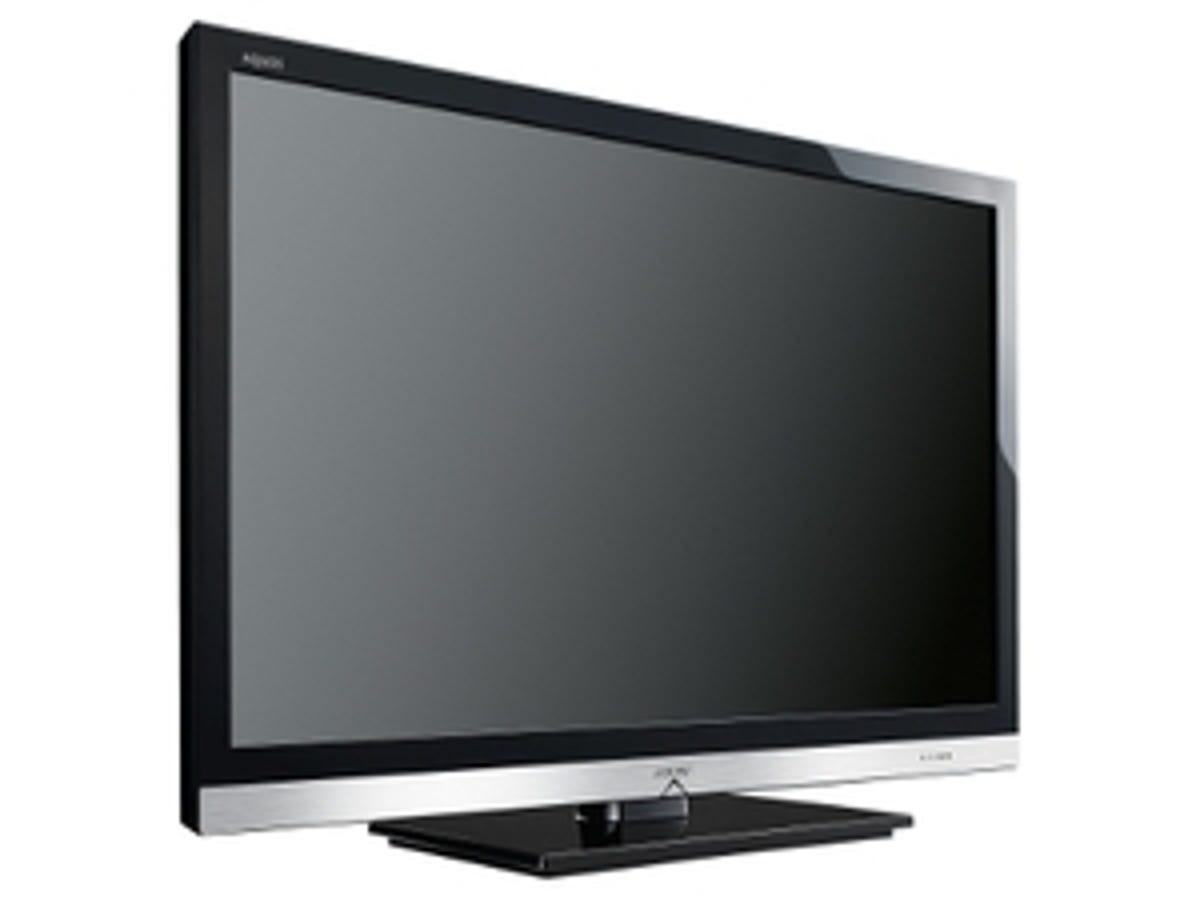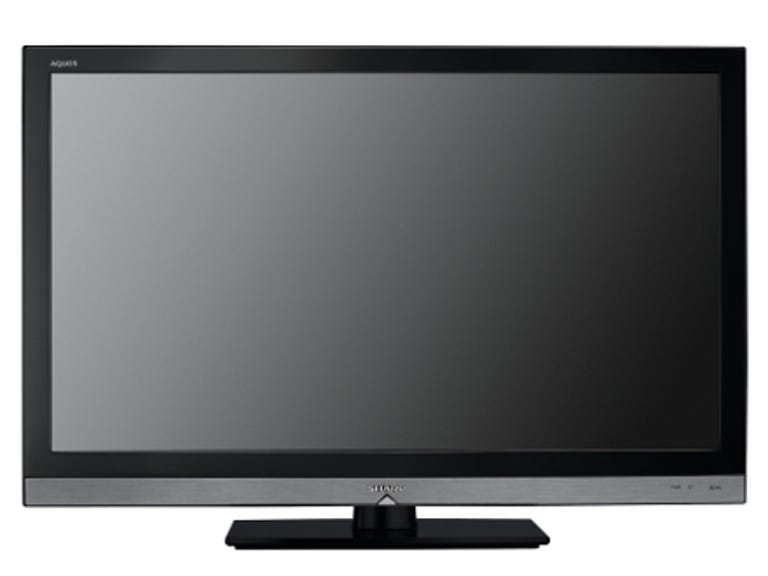 Why You Can Trust CNET
Why You Can Trust CNET Sharp Aquos LE600 (LC40LE600E) review: Sharp Aquos LE600 (LC40LE600E)
The 1080p, 40-inch Aquos LC40LE600E is remarkably affordable for an LED-backlit LCD TV. While Sharp's cut a few corners to keep the price down, the set looks great and its pictures are often blisteringly intense, without any of LED backlighting's usual unpleasant side effects
While Sharp's LCD TVs are generally considered decent, it's been a while since we saw anything truly spectacular or innovative from the Japanese manufacturer. But that's changed with the arrival in our test laboratory of Sharp's £900 Aquos LC40LE600E, a 40-inch, 1080p LCD TV that aims to bring LED-backlighting technology to the masses, without as many compromises as you might expect.
The Good
The Bad
The Bottom Line
LED-backlit bargain
Using LED lighting in LCD TVs is currently all the rage. In its short life, the technology has already been responsible for a startling number of genuinely exciting design and picture-quality improvements, and every manufacturer and their mother has new ranges of LED-lit TVs waiting in the wings.
Sharp's LC40LE600E is definitely one of the most exciting of these newcomers, for one simple reason: it's cheap. Or at least, at about £900, it's cheap compared with every other LED-backlit model that we've seen to date. The LC40LE600E's price seems even more surprising when you consider that it uses direct LED backlighting, rather than the edge-based system used in Samsung's latest LED-lit models.
Direct LED backlighting, with the LED array positioned right behind the screen, is generally considered to enable better pictures than edge lighting because it supports local dimming. In other words, since direct LED-backlit TVs can control the light output of individual LED clusters within the picture, you can have a really dark picture part sitting right alongside a really bright picture part in a way that's simply not possible with ordinary LCD TVs or LED-edge-lit TVs.

The only obvious cost-cutting compromise that Sharp seems to have made with the LC40LE600E's LED specification is that it ditches the RGB-dimming system used on the company's hugely expensive XS1 LED-backlit TVs, as well as Sony's costly Bravia X4500 LED-backlit series. Consequently, the LC40LE600E doesn't produce such extravagantly wide colour gamuts as the RGB-dimming machines, but the difference is minor enough to be easily tolerable within the context of the vastly cheaper price.
Look, don't touch
It's good to see the LC40LE600E's ground-breaking nature reflected
in a suitably flash design, with a glinting, dark, metallic strip
running crisply along the bottom edge of the otherwise glossy black
bezel. It's a shame that the TV feels rather plasticky and lightweight, and its rear end sticks out far further than those of Samsung's LED-backlit TVs. But none of these problems is apparent from a typical, front-on seating position.
More of an issue is the way the LC40LE600E falls short of the competition on the connections front. As well as only offering three HDMI ports, when we would expect a premium TV to have at least four, the only multimedia support comes from a D-Sub PC port. There's no Ethernet port, and the provided USB port is only there for service use, not for playback of JPEGs, MP3s or video files.
Blisteringly intense pictures
It's also worth pointing out that, while the LC40LE600E has a film mode designed to reduce background judder during camera pans, it doesn't offer 100Hz processing. For that, you need to step up to Sharp's Aquos LE700 series. The lack of 100Hz processing is felt in the LC40LE600E's picture performance. Motion reproduction lacks the clarity and sharpness witnessed on a growing number of LCD and plasma TVs these days.
Thankfully, though, this is pretty much the only bad thing we have to say about the LC40LE600E's picture quality. In practically every other way, its LED lighting system helps it produce images of frequently blistering intensity. For instance, the much-vaunted black-level potential of direct LED backlighting is impressively realised. The blue rinse seen over dark scenes on Sharp's ordinary LCD TVs is completely removed, leaving black colours of rare naturalism and depth.
The LC40LE600E also delivers on direct LED backlighting's promise of bright, rich picture elements appearing within the same frame as rich, deep blacks. This helps pictures of all sorts -- but especially Blu-ray movies -- look sensationally dynamic and punchy, especially as the LED backlighting also helps the LC40LE600E produce one of the most aggressive colour performances ever seen on a halfway-affordable LCD TV.
Making these strengths all the more impressive is the fact that they're achieved without any serious evidence of direct LED backlighting's halo phenomenon, whereby the relatively low number of LED clusters compared with pixels in the picture can cause white shadows to appear around bright image elements.
In an ideal world, Sharp would have shipped the LC40LE600E with a more sensible picture preset, in place of the stupidly over-aggressive 'dynamic' one. Shifting to the set's 'movie' preset or, better still, calibrating the TV from scratch should be a matter of priority if you buy the LC40LE600E. The LC40LE600E's sound is rather average too, and using the TV is hindered by an underwhelming remote control.
Conclusion
While some minor flaws prevent the Sharp Aquos LC40LE600E from being the truly
classic set it might have been, it's still another compelling addition
to the canon of LED-backlit TVs, especially given its ground-breaking
price.
Roll on Sharp's Aquos LE700 range with 100Hz processing.
Edited by Charles Kloet
